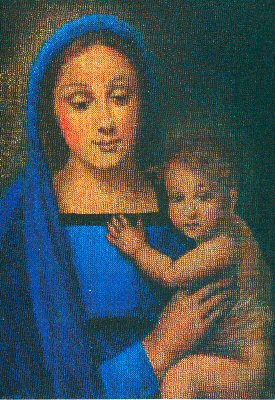One must be careful of the sensibilities of one’s friends and co-religionists, yet it is difficult not to comment upon the remarkable coincidence of eras of our (and indeed other) country’s history – of violence, of great physical, emotional and spiritual deprivation – and the alleged appearance of the Blessed Virgin,
with messages, to frail, gentle, and invariably impoverished zealots proclaiming devotion and prayer as the solution.
I know the latter description to suit the lady who proclaimed the 1950’s apparition at Ardboe, Tyrone. I consider it apt also to the alleged appearances at
Only the most enduring, like
The following account of an apparition in Tipperary at the height of the Black and Tan War, taken from Patrick Shea’s book Voices and the Sound of Drums (Blackstaff, 1981) seems apt – and to my (admittedly-sceptical) ear, fairly balanced.
The newspapers took up the story of the bleeding statues, the holy well and the straightened cripple. The story brought wonder and hope all over the country to homes where there was illness and infirmity. From all over people set out for Templemore, relatives bringing the disabled, the deformed and the sick, sad, praying people coming hopefully to the shrine of the Virgin Mary. Returning pilgrims brought home news of further cures. In every corner of
Military authorities and insurgents alike seemed to observe a ceasefire; shootings and pillaging were forgotten. There was no point in enforcing regulations which prohibited motorists from travelling more than twenty miles without a permit. It had been imposed to hamper the movements of the IRA but was now ignored by hurrying pilgrims and by the police.
There came stretcher cases, babes in arms, invalids in wheelchairs, the mentally ill, the blind, the deformed; and outside the little cottage the pile of discarded crutches got bigger.
Then, as suddenly as it had begun the whole thing ceased to be news. The papers mentioned it no more, the flow of pilgrims ceased and there were no more miracles. In the aftermath it became apparent that the events were put to good use by the guerrilla forces of the IRA. Men on the run were moved to new hiding places, the disposition of active service groups was rearranged and new supplies of arms and munitions were distributed.
(Editor’s note)
No doubt the official forces of the Crown used the opportunity to infiltrate spies into local communities too.
The war re-commenced.
